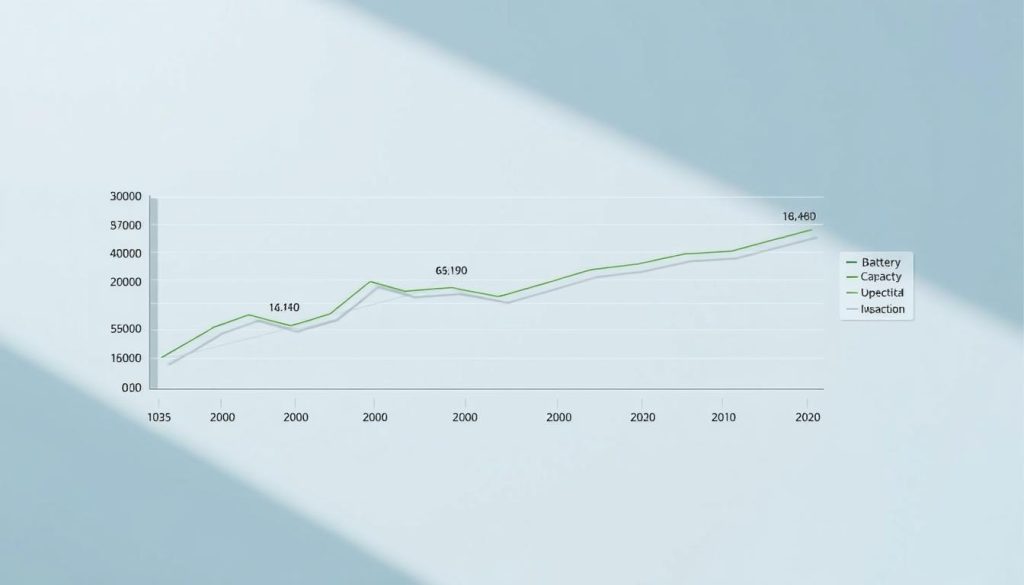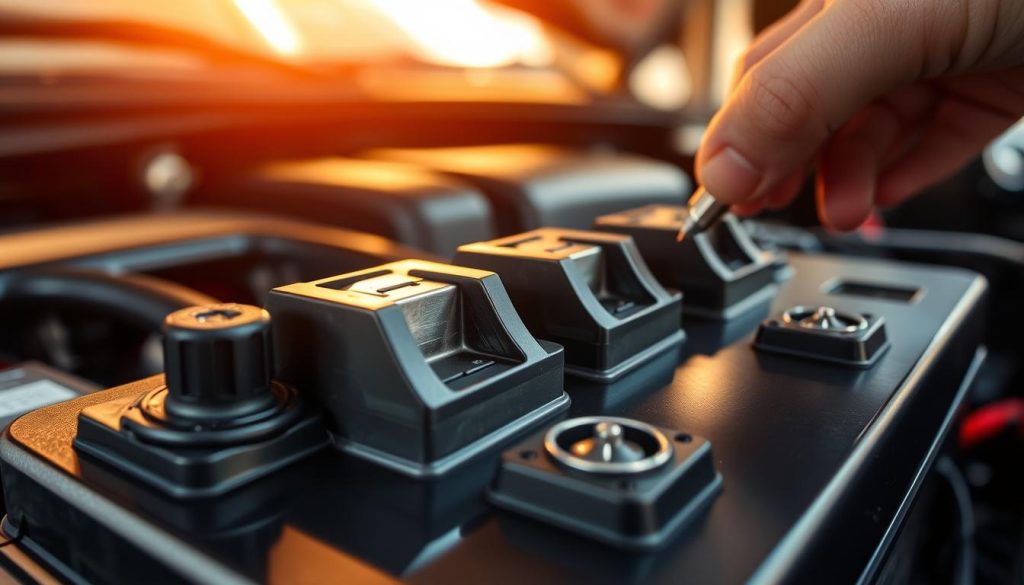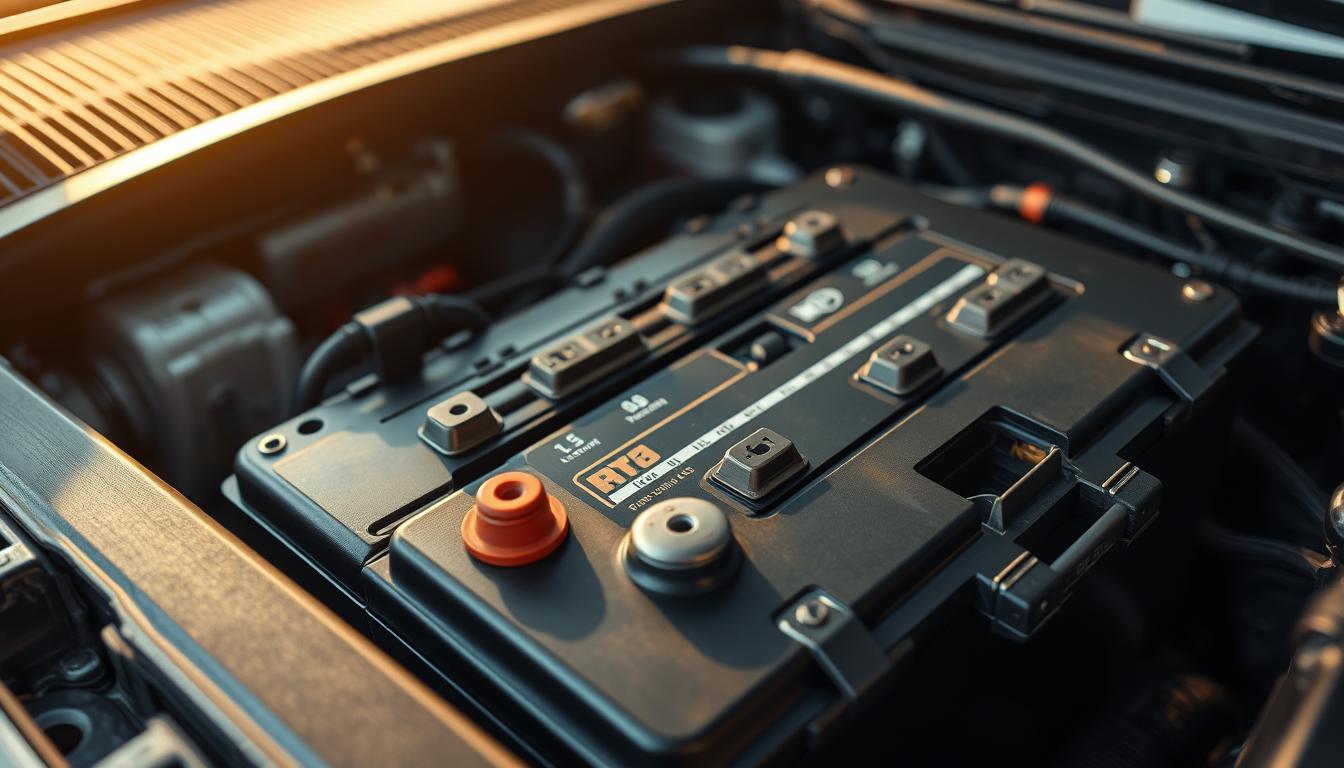Driving a full-size SUV means you expect it to perform well. It’s all about reliability on every adventure. Taking good care of it is key to getting the most out of your vehicle.
Car makers with years of hybrid experience set the bar for battery life. Think about this: over 13% of drivers kept their vehicles for 15+ years without needing new parts. This shows what happens when design meets regular maintenance.
Your SUV’s battery needs three things to stay healthy: the right temperature, regular charging, and not too much use. Short trips in cold or hot weather hurt batteries more than long drives. And letting the battery get too low too often is like running on empty.
By following tips from long-term owners, you can make your SUV last longer. Simple steps like checking voltage and updating software keep your vehicle running smoothly. This is true whether you’re driving through mountains or city streets.
Why Battery Care Matters for Your Toyota Sequoia
Your Toyota Sequoia’s battery is more than just for starting the engine. It keeps your adventures going smoothly. Modern SUVs need more from their batteries than ever before. So, taking care of your battery is key to avoiding problems later.
The Heart of Your SUV’s Electrical System
Today’s batteries work hard to power new features. They support everything from safety tech to comfort systems. Here’s what needs consistent power:
- Collision avoidance systems and emergency braking
- Dual-zone climate controls and heated seats
- Smartphone integration and navigation displays
A Wellesley Toyota service manager says, “A well-maintained battery protects your significant investment in advanced technology.” Start-stop systems, for example, need a strong battery. They restart 5-10 times per city drive.
How Batteries Power Modern Vehicle Features
Your Sequoia’s electrical needs have grown 40% from 2015 models. The table below shows key systems and their power needs:
| System | Power Draw | Operation Frequency |
|---|---|---|
| LED Headlights | 150-200W | Nightly |
| Infotainment | 50-80W | Continuous |
| Safety Sensors | 30-45W | Always Active |
Consequences of Neglected Battery Maintenance
Ignoring battery care leads to three main problems:
- Corrosion buildup: Adds $20-$40 labor costs for cleaning (Nalley Toyota data)
- Alternator overwork: Drains fuel efficiency by 2-4%
- Roadside emergencies: 23% of jumpstart calls trace to poor maintenance
Loose terminal connections can be fixed in 10 minutes if caught early. But, if ignored, they can leave you stranded. Regular checks keep electrical flow steady and prevent component failures.
Understanding Toyota Sequoia Battery Life Fundamentals
Your Toyota Sequoia’s battery life isn’t just luck. It’s a mix of good engineering and care. Let’s look at what owners can expect from their SUV’s battery across different years.

What Years Deliver the Best Battery Performance?
Most Sequoia batteries last 3-5 years. But, your experience can change based on a few things:
- 2nd generation models (2008-2022) use traditional SLI batteries
- 3rd generation models (2023+) have advanced AGM batteries
- Extreme weather can also affect battery life (more on this in Section 4)
Battle of the Generations: 2nd vs 3rd Gen Batteries
| Feature | 2nd Gen (SLI) | 3rd Gen (AGM) |
|---|---|---|
| Average Lifespan | 3-4 years | 4-5+ years |
| Cold Cranking Amps | 650-750 CCA | 800-850 CCA |
| Vibration Resistance | Standard | Enhanced |
Real Owners, Real Results
Forum data shows interesting trends:
- A 2015 owner had their battery last 6 years
- 2020 model users see an average of 3.8 years in hot weather
- “My 2008 Sequoia’s battery lasted 200k miles with monthly checks” – Nalley Toyota service records
Newer models usually do better, but care can extend older batteries’ life. Next, we’ll see how driving habits affect battery life.
Key Factors Affecting Your Battery’s Longevity
Your Toyota Sequoia’s battery health depends on both external conditions and daily driving patterns. Let’s explore how weather extremes and common habits quietly chip away at your SUV’s power reserves.
Environmental Impacts on Performance
Georgia drivers know all too well how climate affects car batteries. Summer heat accelerates chemical reactions inside batteries, while winter cold thickens engine oil – both forces your Sequoia to work harder.
Extreme Temperature Survival Guide
Park in shaded areas during heatwaves to prevent electrolyte evaporation. In freezing conditions, consider using an insulation blanket. Pro tip: Nalley Toyota technicians recommend monthly terminal cleaning for vehicles parked near coastal areas.
Humidity and Corrosion Risks
High moisture levels create a perfect storm for corrosion. Check these warning signs every 3 months:
- Chalky white residue on terminals
- Difficulty starting the engine
- Flickering dashboard lights
Driving Habits That Drain Power
Your daily routine might be shortening your battery’s lifespan without you realizing it. Short errands and accessory overuse prevent proper charging cycles.
Short Trip Consequences
Trips under 30 minutes don’t allow alternators to fully recharge batteries. Combine multiple errands into single outings when possible. If you mainly drive short distances:
- Take a weekly 45-minute highway drive
- Limit accessory use during quick trips
- Consider periodic trickle charging
Accessory Overload Prevention
Your Sequoia’s entertainment and comfort features demand more power than you might expect. These are the top 3 energy hogs:
- Rear-seat video systems (draws 15-20 amps)
- Cooled/heated cup holders
- Aftermarket fridge consoles
Rotate accessory use during drives. Unplug devices when not in use to prevent phantom drains.
Proactive Maintenance Checklist
To keep your Toyota Sequoia’s battery in great shape, you need to care for it regularly. These steps mix dealer advice with owner tips to prevent unexpected breakdowns.
Monthly Inspection Routine
Make a reminder on your calendar for these quick checks. Wellesley Toyota experts say doing this 10-minute check is key for high-mileage SUVs.
Terminal Cleaning Step-by-Step
Grab these supplies: safety gloves, wire brush, and baking soda solution (1 cup water + 1 tbsp baking soda).
- Disconnect negative cable first, then positive
- Scrub terminals with brush until shiny
- Rinse with solution using old toothbrush
- Dry completely before reconnecting

Use a digital multimeter for accurate readings. Nalley’s guide suggests testing after the vehicle sits overnight:
- 12.6V+ = Optimal charge
- 12.4V = Needs charging
- Below 12.2V = Professional evaluation required
Seasonal Preparation Strategies
Change your care routine with the seasons. These tips can extend your battery’s life.
Summer Cooling System Checks
Heat makes fluid evaporate faster. Before trips:
- Inspect battery case for bulges/swelling
- Verify coolant levels in overflow reservoir
- Park in shade when possible
Winterizing Your Battery
Cold weather weakens cranking power. Try these cold-weather tactics:
- Apply dielectric grease to terminals
- Use thermal wrap below 20°F
- Keep fuel tank above half full
Remember: A 30-second pre-drive warmup helps your alternator recharge the battery more effectively.
Early Warning Signs of Battery Failure
Spotting battery issues early keeps your Toyota Sequoia running smoothly. Drivers often notice changes in performance before complete failure occurs. Pay attention to these red flags to avoid getting stranded.
Performance Degradation Indicators
A slow engine crank during startup signals weakening battery power. If dashboard lights flicker or electronics reset unexpectedly, these erratic power patterns suggest voltage fluctuations. Modern Sequoia models may display battery alerts through the vehicle’s onboard diagnostics system.
Warranty and Replacement Considerations
Toyota’s battery warranty typically covers defects for 24-84 months, depending on your model year and dealership. Nalley Toyota technicians recommend checking your specific coverage before paying for replacements. OEM batteries ($200-$400) offer exact fitment and warranty matching, while aftermarket options ($150-$300) may suit budget-conscious owners.
Recycle old batteries responsibly through Toyota’s nationwide recycling program. Schedule a diagnostic test at authorized service centers if you experience multiple warning signs. Addressing issues promptly extends your Sequoia’s electrical system lifespan and prevents costly repairs.
FAQ
How long does a Toyota Sequoia battery typically last?
Toyota Sequoia batteries usually last 3–5 years. But, models from 2020 with AGM batteries can last up to 7 years with good care. Older models (2008–2019) with SLI batteries might last about 4 years. Nalley Toyota says some well-kept vehicles can go over 8 years.
Regular checks of the battery voltage (aim for 12.6 volts) help a lot. Also, avoiding very hot temperatures is key to making your battery last longer.
Can Georgia’s heat really damage my Sequoia’s battery?
Yes, it can. Georgia’s heat speeds up corrosion and makes fluids evaporate faster. Nalley Toyota’s techs say they see batteries degrade 30% faster in coastal areas than in cooler places. To fight this, clean the terminals monthly and park in the shade.
Why does my Sequoia’s start-stop system feel sluggish?
A weak battery can make the start-stop system slow. Starting the car takes 400–600 amps, almost twice as much as usual. If it’s slow, check the battery’s charge. A voltage under 12.4 volts means it’s failing soon.
Dealerships say to replace the battery before it drops to 12.2 volts to avoid damaging the alternator.
Are aftermarket batteries worth the savings?
Aftermarket batteries are cheaper, costing 0–0 compared to OEM’s 0–0. But, they might not charge as well as Toyota’s batteries. Nalley Toyota warns that the wrong battery can void the warranty and lower fuel efficiency by 2–4% in hybrids.
Always check the cold cranking amps (CCA) for reliable starts. Sequoias need 650–750 CCA.
How do short trips affect battery life?
Short trips under 30 minutes don’t let the battery fully charge. The alternator needs 15+ minutes to recharge after starting. Try to combine trips to get more driving time.
Also, turn off accessories like DVD players or fridge consoles when parked. They can drain 1–2 amps/hour.
What voids the Toyota battery warranty?
Damage from corrosion, improper charging, or aftermarket installations usually voids the warranty. Nalley Toyota’s team checks for signs like blue corrosion crust or swollen cases. Keep receipts for maintenance, like using a trickle charger, for warranty claims.
Can I recycle my old Sequoia battery?
Yes! Toyota’s Eco-Care Program offers free recycling at dealerships. AGM batteries are 99% recyclable, and traditional batteries yield 60–80% reusable materials. Always carry old batteries upright in a plastic bin to avoid spills.
Do heated seats drain the battery when the engine’s off?
Yes, they do. Running heated seats for 15 minutes without the engine can use 10–15% of a healthy battery’s charge. Newer Sequoias turn off accessories after 10 minutes, but older models might drain the battery completely. Use a 12V portable jumper if you often use cabin comforts while parked.
